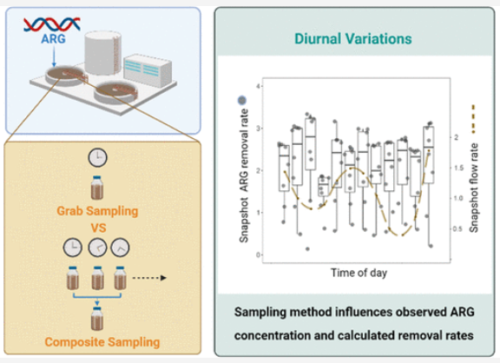2023-01-05 テキサス大学オースチン校(UT Austin)
JWST の登場以前は、ハッブル宇宙望遠鏡の画像から、これほど若い時期の棒状銀河が検出されたことはありませんでした。ハッブル宇宙望遠鏡の画像では、EGS-23205という銀河は円盤状の汚れに過ぎませんが、今年の夏に撮影されたJWSTの画像では、美しい渦巻き銀河であり、はっきりとした星状バーが確認されました。
研究チームは、同じく約110億年前の棒状銀河 EGS-24268 を同定し、これまで発見されたどの銀河よりもはるか昔に存在する棒状銀河を2つ発見しました。
研究チームは、この2つの銀河に加え、80億年以上前の4つの銀河の例も紹介しています。
JWST がハッブル宇宙望遠鏡よりも遠方の銀河の構造を明らかにできるのには、2 つの理由があります。1 つ目は、鏡が大きいため集光能力が高く、より遠くまで、より高い解像度で見ることができることです。また、ハッブル望遠鏡よりも波長の長い赤外線を観測するため、塵を見通すことができるのです。
オースチン大学からは、スティーブン・フィンケルスタイン、ミカエラ・バグリー、マクシミリアン・フランコが共同執筆者として参加しています。他の研究機関の共著者は、米国、英国、日本、スペイン、フランス、イタリア、オーストラリア、イスラエルから数十名が参加しています。
<関連情報>
- https://news.utexas.edu/2023/01/05/james-webb-telescope-reveals-milky-way-like-galaxies-in-young-universe/
- https://arxiv.org/abs/2210.08658
JWST 初期 CEERS イメージングによるレストフレーム近赤外線での z > 1 Bars の初観測
First Look at z > 1 Bars in the Rest-Frame Near-Infrared with JWST Early CEERS Imaging
Yuchen Guo, Shardha Jogee, Steven L. Finkelstein, Zilei Chen, Eden Wise, Micaela B. Bagley, Guillermo Barro, Stijn Wuyts, Dale D. Kocevski, Jeyhan S. Kartaltepe, Elizabeth J. McGrath, Henry C. Ferguson, Bahram Mobasher, Mauro Giavalisco, Ray A. Lucas, Jorge A. Zavala, Jennifer M. Lotz, Norman A. Grogin, Marc Huertas-Company, Jesús Vega-Ferrero, Nimish P. Hathi, Pablo Arrabal Haro, Mark Dickinson, Anton M. Koekemoer, Casey Papovich, Nor Pirzkal, L. Y. Aaron Yung, Bren E. Backhaus, Eric F. Bell, Antonello Calabrò, Nikko J. Cleri, Rosemary T. Coogan, M. C. Cooper, Luca Costantin, Darren Croton, Kelcey Davis, Alexander de la Vega, Avishai Dekel, Maximilien Franco, Jonathan P. Gardner, Benne W. Holwerda, Taylor A. Hutchison, Viraj Pandya, Pablo G. Pérez-González, Swara Ravindranath, Caitlin Rose, Jonathan R. Trump, Weichen Wang
arXiv Published:12 Dec 2022
DOI:https://doi.org/10.48550/arXiv.2210.08658

Stellar bars are key drivers of secular evolution in galaxies and can be effectively studied using rest-frame near-infrared (NIR) images, which trace the underlying stellar mass and are less impacted by dust and star formation than rest-frame UV or optical images. We leverage the power of {\it{JWST}} CEERS NIRCam images to present the first quantitative identification and characterization of stellar bars at z>1 based on rest-frame NIR F444W images of high resolution (~1.3 kpc at z ~ 1-3). We identify stellar bars in these images using quantitative criteria based on ellipse fits. For this pilot study, we present six examples of robustly identified bars at z>1 with spectroscopic redshifts, including the two highest redshift bars at ~2.136 and 2.312 quantitatively identified and characterized to date. The stellar bars at z ~ 1.1-2.3 presented in our study have projected semi-major axes of ~2.9-4.3 kpc and projected ellipticities of ~0.41-0.53 in the rest-frame NIR. The barred host galaxies have stellar masses ~ 1×1010 to 2×1011 M⊙, star formation rates of ~ 21-295 M⊙ yr−1, and several have potential nearby companions. Our finding of bars at z ~1.1-2.3 demonstrates the early onset of such instabilities and supports simulations where bars form early in massive dynamically cold disks. It also suggests that if these bars at lookback times of 8-10 Gyr survive out to present epochs, bar-driven secular processes may operate over a long time and have a significant impact on some galaxies by z ~ 0.




